Embracing Autumn in Japan: A Season of Change
From ancient customs to every day pleasures, the magic of autumn
A season full of change
Spring time in Japan is a busy period with new school terms, graduates starting at companies, and the end of the financial year marking life transitions and administrative tasks. While many countries begin their school terms in September, autumn in Japan is a relatively quiet period. The hot and humid summer gives way to crisp air, and coolness. There are several public holidays that celebrate culture, sports, and nature.
The bounty of autumn
In the summer people talk of losing their appetite. Autumn is the season of harvest. Rice fields in the neighbourhood are being harvested, supermarkets and local produce shops are lined with seasonal foods such as pumpkins, carrots, burdock, matsutake mushrooms, apples, persimmons, grapes, chestnuts and the star of the season — sweet potatoes. The aroma of baked sweet potato is a delectable treat.
As the days get shorter and it starts to get colder, it becomes the perfect time for reading books. The annual Reading Weeks, held from October 27th to November 9th sees libraries and bookshops holding events to encourage people to curl up with a book.
Japan’s enjoyment of autumn is rooted in its history and enriched by a blend of traditional and modern practices. Each year, people find their own ways to celebrate the season, appreciating the quiet beauty and changes that unfold.
The science behind autumn
According to the Japan Meteorological Agency, autumn spans from September to November. The Earth's tilt causes the sun to rise and set at a shallower angle, leading to cooler temperatures and shorter days. Another enduring feature of autumn is the harvest moon. As the moon rises earlier in the evening, it provides more light. Farmers could work out longer in the fields due to increased moonlight, a blessing during harvest time, thus leading to the moon being called Harvest Moon.
Weather patterns shift as alternating high and low-pressure systems bring both clear skies and unsettled weather. Trees respond to the changes too. In the spring and summer, the leaves of trees appear green because of chlorophyll, the pigment which causes photosynthesis and allows plants to convert sunlight to energy. With the arrival of cooler temperatures and lesser sunshine, trees start to reduce the production of chlorophyll. This reveals hidden pigments in leaves, turning them into stunning shades of yellow and orange. As the winter approaches, some trees also produce anthocyanins—pigments that give leaves their striking red colors. In Japan, this natural process manifests spectacularly. In the Kansai region in western Japan, by mid November, the gingko leaves turn a bright yellow and by early December most of the maple tree leaves turn red, creating a magnificent tapestry of colors.
The history of autumn foliage viewing
The practice of 紅葉狩り (Momijigari, or "hunting for autumn leaves") dates back to the Heian period (794-1185), when aristocrats would venture into the mountains to enjoy the changing colors. They named the activity "hunting" to add a touch of elegance, often hosting poetry gatherings and banquets. The oldest collection of Japanese poetry, the Manyoshu (late 7th century), contains numerous verses dedicated to autumn's beauty. By the Edo period (1603-1868), foliage viewing had become a popular pastime for the broader population, as depicted in ukiyo-e woodblock prints that capture the contrasting colors of the season.
Kyoto and beyond: Fall viewing spots
There are several places to enjoy autumn in Japan, the most popular among them are Kyoto, Nikko, and Hokkaido. Kyoto is possibly the most popular destination in Kansai. Famous spots like Kiyomi zu-dera, Arashiyama, and Tofuku-ji are popular and hordes descend upon these places every autumn. The backdrop of the architecture of old temples and shrines against the autumn colors and blue skies is mesmerising and an irresistible pull. Late autumn paints Kyoto in many colors, but it is the chase of the colour red that really takes hold on people’s imagination. In Tofukuji Temple, for instance, the Tsutenkyo Bridge stretches out over a valley full of maple trees that turn red. The redness doesn’t last long. It is a fleeting beauty that mystifies and seems other worldly — a sight befitting Gods. The temple extends over several acres, and though the crowds hover around some spots, there are several others, where free of the red beauty, it is in fact possible to relax and wonder.
While these popular destinations are certainly beautiful, they can get quite crowded and feel a bit banal with people jostling over each other to capture the beauty with smartphones and cameras. If crowds aren’t your thing, there are quieter ways to enjoy autumn. Even in the usual suspects like Kyoto, joy abounds in slow walks along the Kamo river or in the botanical garden, or the many shrines and temples that are not on the checklist. Wherever you are in Japan, there are more simple ways of enjoying autumn.
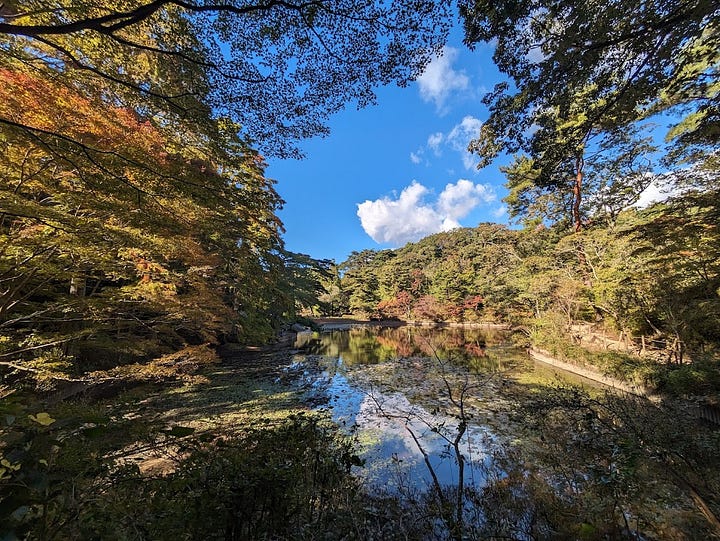
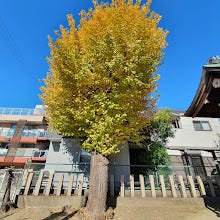
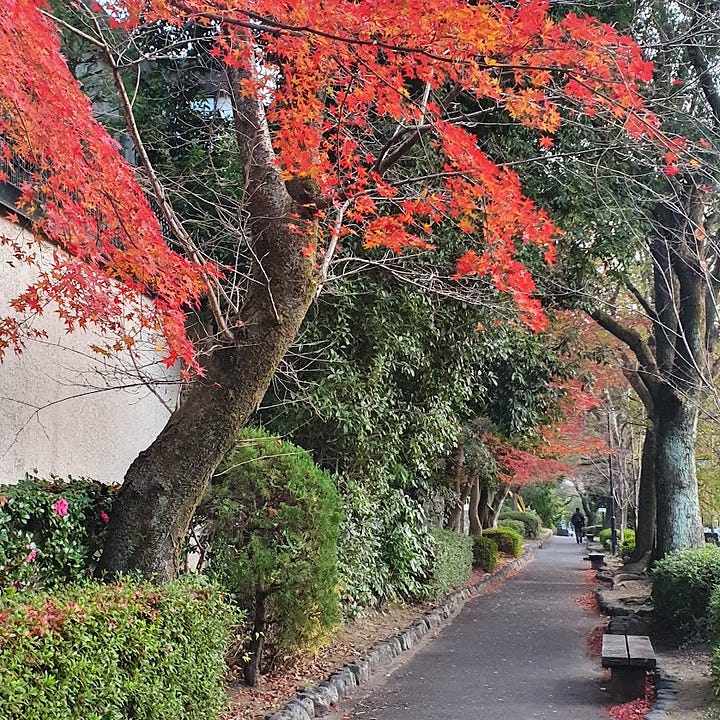
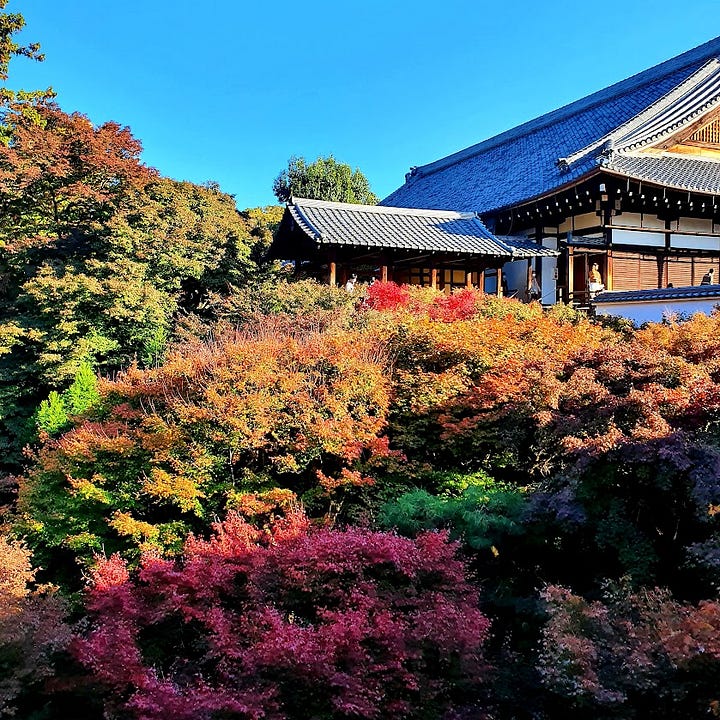
The slow and conscious enjoyment of autumn
Going for a walk in the city parks, being more observant of roadside trees, checking the local shops to see what kind of seasonal foods are on display, going to the neighbourhood restaurant to try seasonal dishes, or even checking the convenience store for seasonal desserts can all be enjoyable. As the country transitions from summer to winter, the air is filled with a sense of change, renewal, and timeless beauty—inviting everyone to slow down and simply enjoy.
Selected Sources
https://skyatnightmagazine.com/advice/how-does-earth-orbit-the-sun
https://www.gov-online.go.jp/eng/publicity/book/hlj/html/202209/202209_01_jp.html
https://www.ndl.go.jp/landmarks/details/detail318.html?keywords=colored-leaves
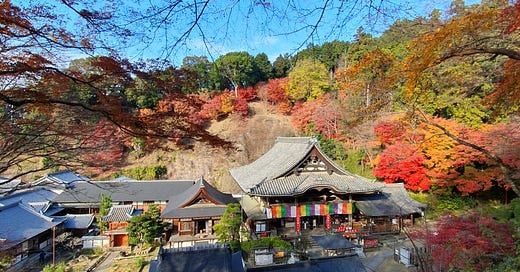



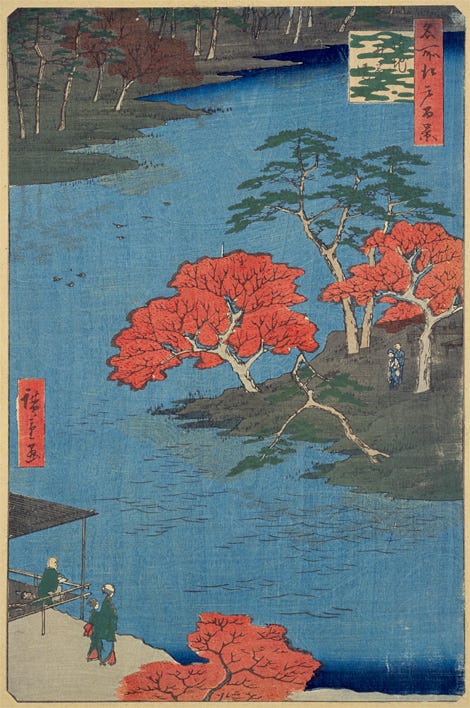
Ah, yes! Wish I were there. Thank you so much.